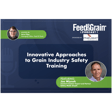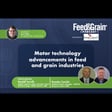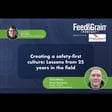Become a Creator today!Start creating today - Share your story with the world!
Start for free
00:00:00
00:00:01

Tackling Combustible Dust Safety with Tim Heneks
In the latest episode of the Feed & Grain podcast, host Steven Kilger sits down with Tim Heneks, Director of Engineering Services at Dustcon Solutions, to explore the critical issue of dust control and maintaining workplace safety. Tune in as they discuss combustible dust hazards, dust hazard analysis, and cost-effective dust control upgrades.

















